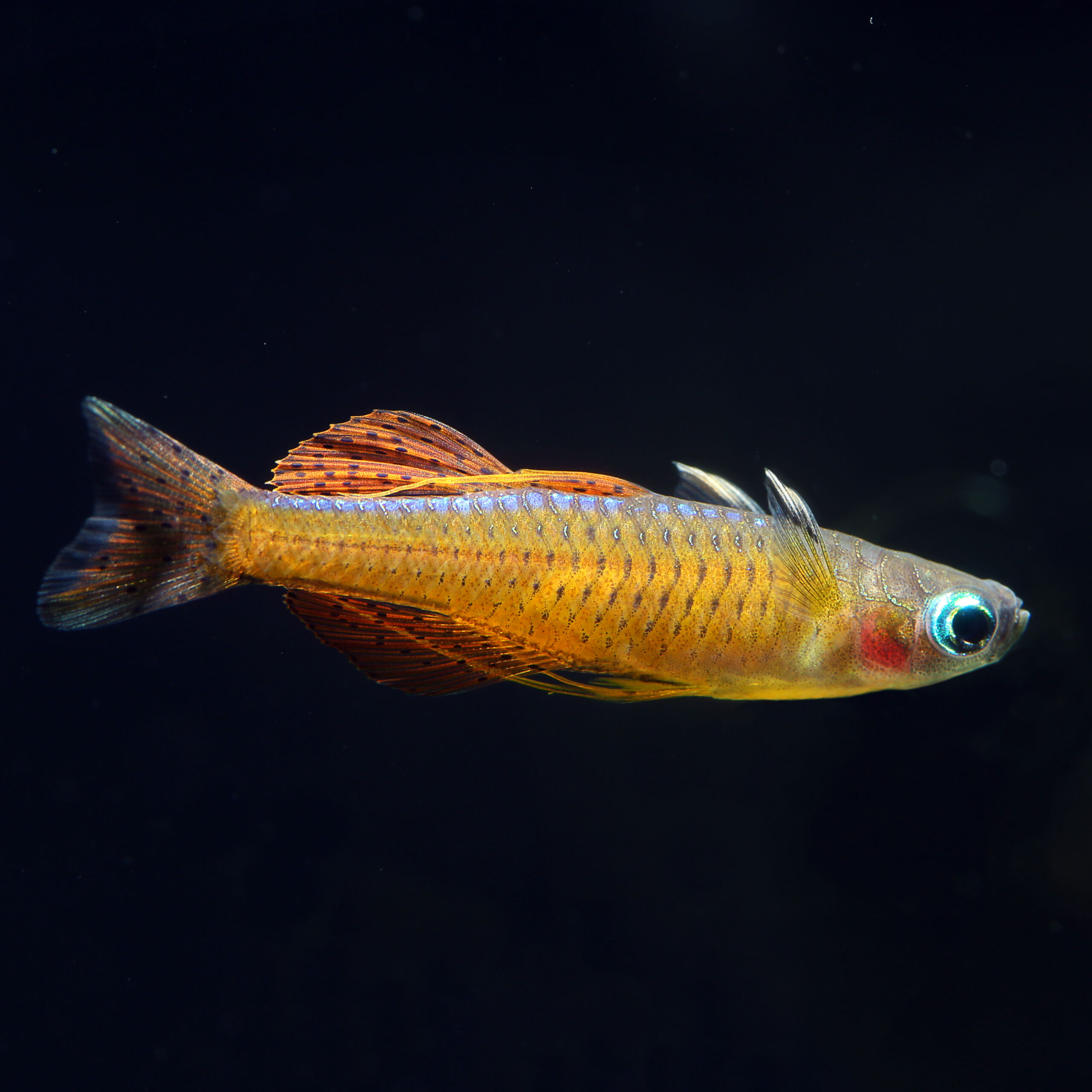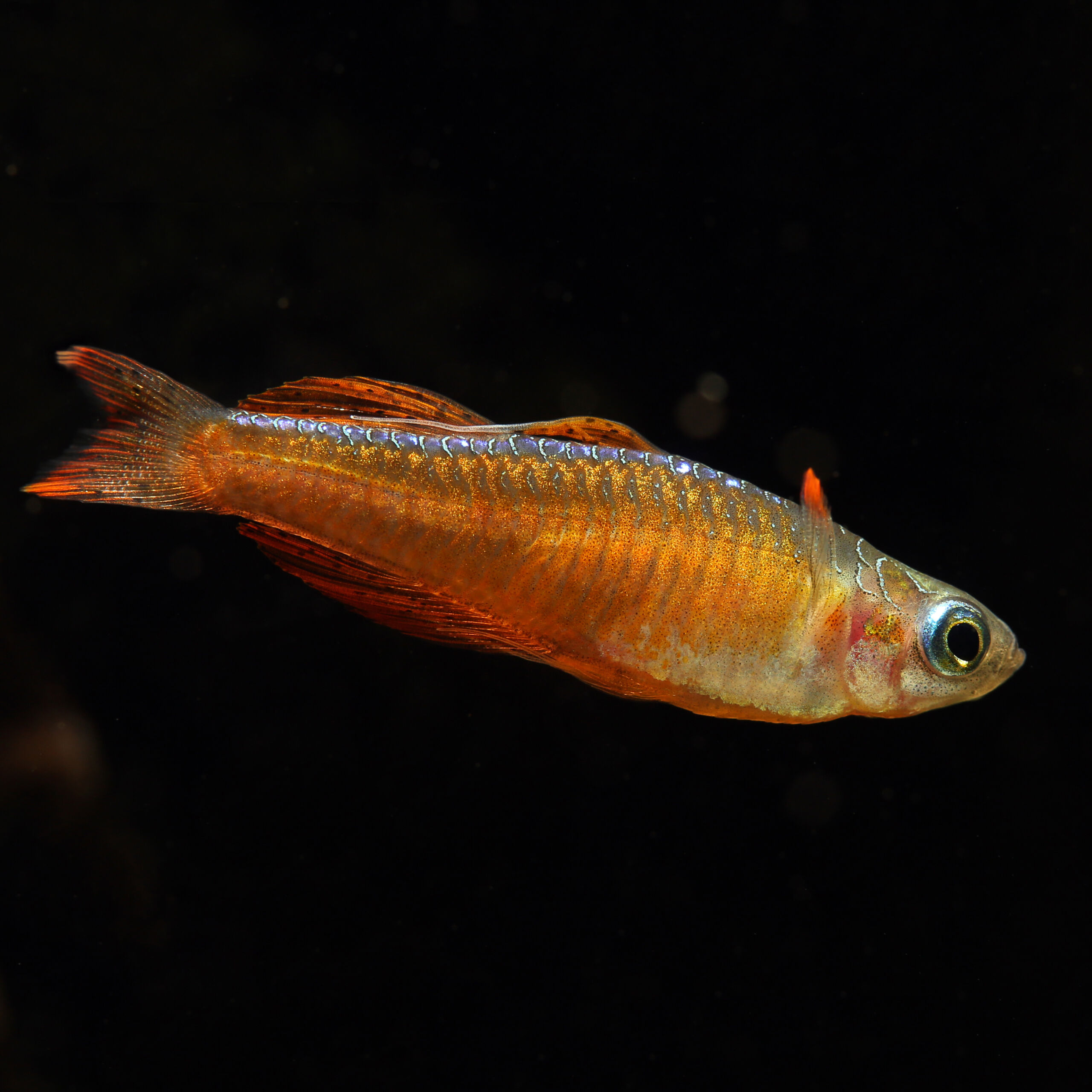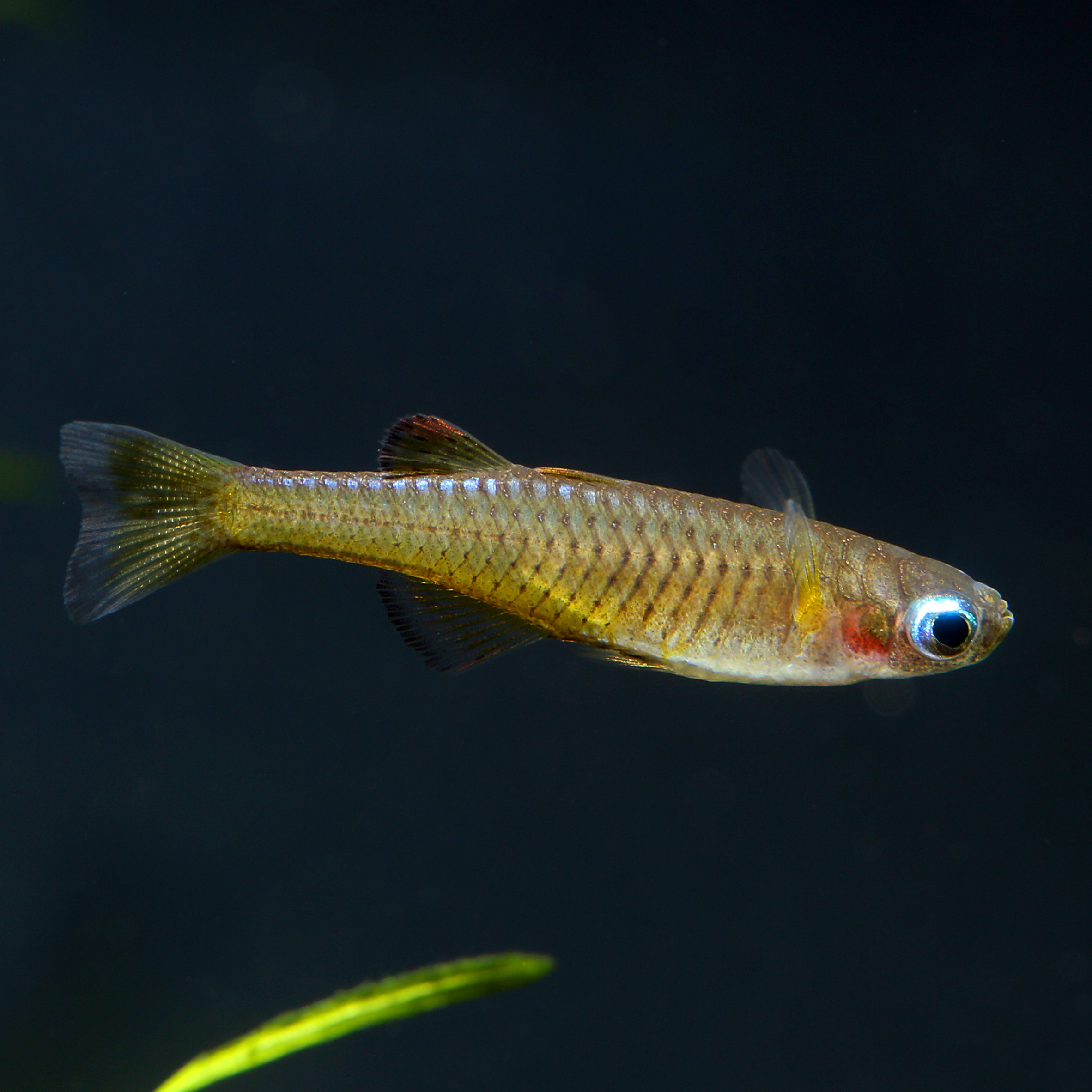Red Neon Blue-eye
Pseudomugil luminatus
The Red Neon Blue-eye is a beautiful fish up to 4cm in size, which attracts everyone’s attention with its bright colors.
- elegant looking schooling fish
- intense orange coloring
- bright blue eyes
1 in stock
 Delivery in a few working days
Delivery in a few working days
 Free shipping from €60 across Austria
Free shipping from €60 across Austria





Important data
Product description & details
Pseudomugil luminatus, also known as Red Neon Blue-eye or Paska’s Blue-eye, originally comes from the Indonesian part of New Guinea. Its natural habitat includes clear to tea-colored swamps with rather slow currents. Its yellow- to red-orange coloring forms a beautiful color contrast to the metallic blue shimmering back line and the bright blue eyes. What is particularly interesting to observe is the courtship and display behavior of the males, who then present themselves with their fins wide-spread.
Care in the aquarium
The approximately 3-4cm long Red Neon Blue-eye requires an aquarium that holds at least 60 liters. Dense planting that leaves enough space for swimming and a group with at least 10 of its own contribute to the well-being of the pretty blue-eye. The group should consist of more females than males. The aquarium water should be clean, soft to medium hard and ideally have a temperature between 22 and 28°C. In addition, the current should be rather light. Socializing the extremely peaceful blue-eye with other peaceful fish is possible without any problems.
Feeding
The Red Neon Blue-eye, which feeds primarily on a carnivorous diet in nature, particularly likes to eat live and frozen food of the appropriate size in the aquarium. Small commercial fish food is also accepted. It is optimal to feed as variedly as possible.
Sexual characteristics and breeding
Like almost all representatives of the Pseudomugil genus, the Red Neon Blue-Eye exhibits pronounced sexual dimorphism, i.e. visually easily recognizable sexual differences. What is particularly noticeable in the male is the elongated, dark-dotted fins and the much more intense yellow to red-orange coloring of the body and fins. Females, on the other hand, usually have a somewhat paler, yellow body color and largely colorless fins and also remain a little bit smaller than their male counterparts. Differentiation between the sexes is possible without any problems from around 6 months of age. If the water parameters are right, breeding in the aquarium is usually not very difficult. The willingness to spawn can be stimulated by feeding more live food. The female attaches the eggs to plants or the substrate using adhesive threads. A spawning mop can also be introduced into the aquarium for this purpose and transferred to a separate breeding tank after spawning. The young fish hatch after about 1-2 weeks and can then be fed with infusoria, dust food, copepods and newly hatched Artemia nauplii.







